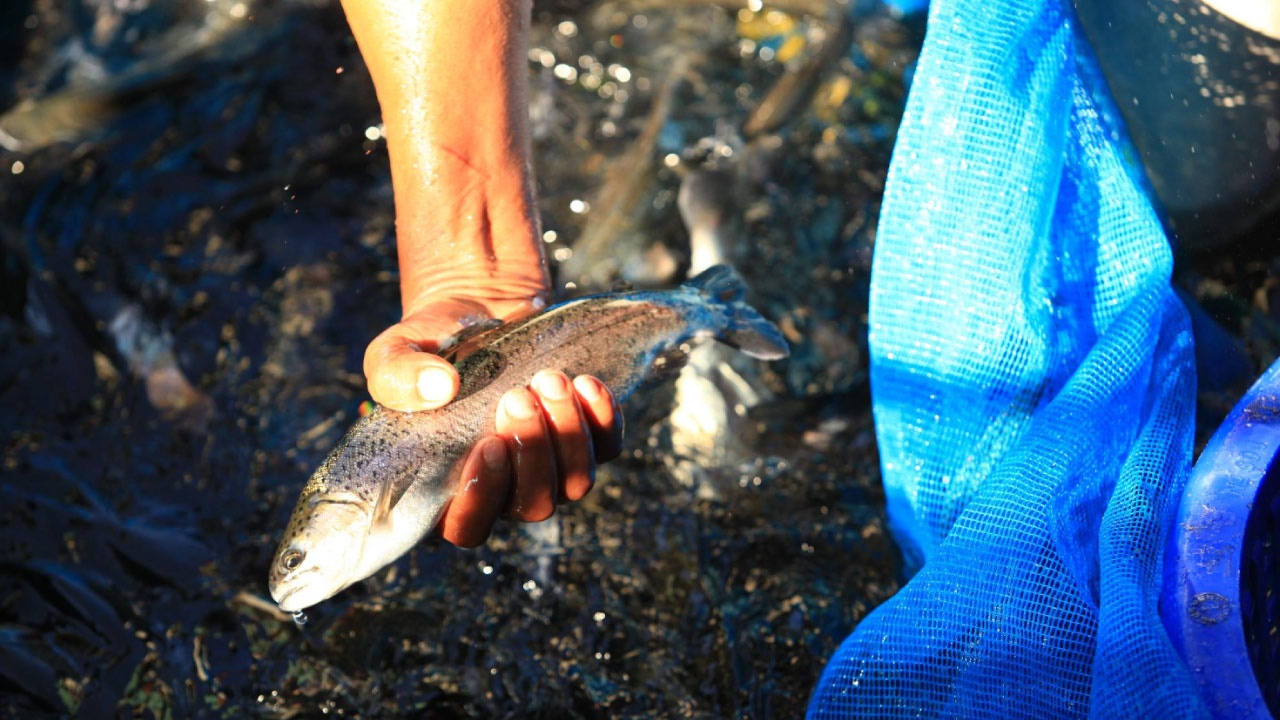
A team from the Hagerman Fish Culture Experiment Station, part of the US Department of Agriculture’s Research Service, has unveiled how rainbow trout transform dietary plant oils into essential omega-3 fatty acids, EPA and DHA.
It is well known that rainbow trout, like other salmonids, have a limited ability to biosynthese omega-3 from plant-based oils such as alpha-linolenic acid found in flaxseed and canola. This process is facilitated through enzymatic reactions involving desaturation (the introduction of double bonds) and elongation (the extension of the carbon chain). Therefore, diets rich in fatty acid precursors can enhance the fish’s biosynthesis capability. Genetic variations among individuals and strains can influence the efficiency of enzymes that catalyse desaturation and elongation reactions, as well as the overall health and metabolism of the fish and their ability to process and utilise nutrients, including fatty acids.
This study, unlike others that focus on the effects of diet on omega-3 biosynthesis in trout, also incorporates a detailed genetic analysis, specifically concerning fatty acid-binding proteins (FABP). This allows a deeper understanding of how the fish’s genetics interact with its diet to influence lipid metabolism.
Conducted in Idaho, the study examined differences in protein expression among various groups of trout. The researchers determined that high levels of these proteins are directly associated with the fish’s enhanced ability to transform plant oils into omega-3 fatty acids, crucial for human health.
This discovery opens the door to genetic selection plans in trout aimed at improving their ability to convert dietary plant oils into omega-3, reducing dependence on high fish oil diets. This strategy could also lead to reduced feeding costs while maintaining health standards for consumers of aquacultural products.
For this discovery, the researchers utilised transcriptomic and proteomic analyses to assess differences in gene and protein expression among group of trout with varying abilities to convert and store omega-3 EPA and DHA.
Trout with high levels of FABP proteins in their liver exhibited an increased conversion of plant oils into omega-3 EPA and DHA. This finding suggests that FABP could be useful genetic marker for selecting fish in breeding programmes.
Reference: Overturf, K., Abernathy, J., Kültz, D., Bledsoe, J., Narum, S., & Welker, T. (2025). Potential physiological mechanisms behind variation in rainbow trout (Oncorhynchus mykiss) to biosynthesise EPA and DHA when reared on plant oil replacement feeds. Aquaculture Reports, 41, 102655. https://doi.org/10.1016/j.aqrep.2025.102655


